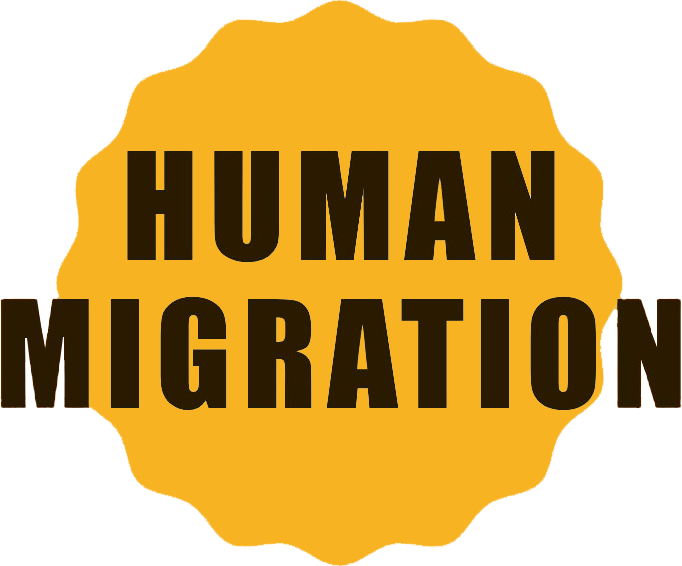Workshop Design
FRAMES FOR WORKSHOP
•Co-creation.
•1 or more Migrant performers.
•An element of science.
TIME
•3 day preparation.
•2 days workshop.
•Open doors Thursday.
ELEMENTS
•Lecture from scientist to artist.
•Artist formulates workshop.
•Workshops.
•Reflection group.
•Presentation of workshop.
(by migrant performers)
Participants
These are the people I invited to join the Human Migration project. Many of them I had worked with before, whilst some of them are new to me. I wanted to have performers with migration experience. Below them you can find colleagues with different artistic backgrounds that I invited to do small workshops. Further down you can see the three scientists i collaborated with. The first, Moritz Schramm with a german background, had a research project called Post-Migration that tried to think of society as: ‘This is how it is. There is no going back to a time before migration. How do we coexist in this situation we are in?’ Peter de Barros Damgaard is a PhD student in geogenetics and has a brazillian background. Babak Vakili, is both a rapper, and has a background in political science as well. He is a very close co-worker whom I have been working with in contact projects, and he has an Iranian background.
Performers with migration experience
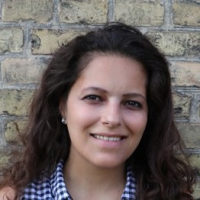
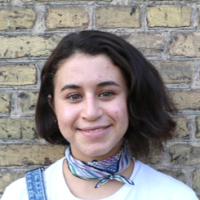
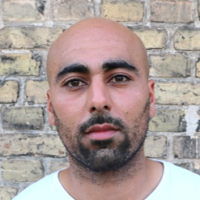
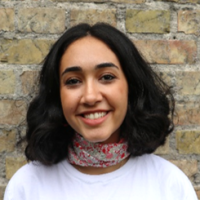
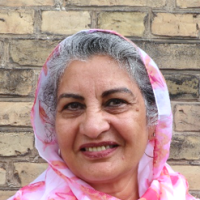
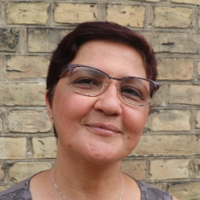
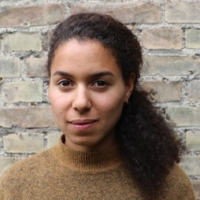
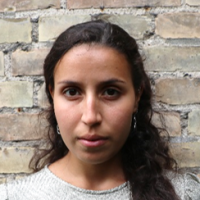
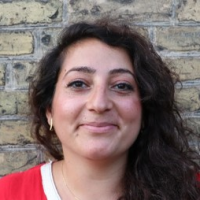
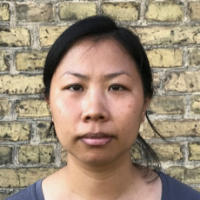
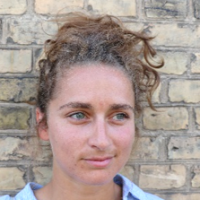
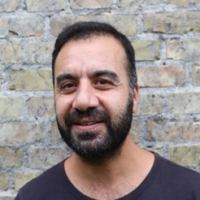
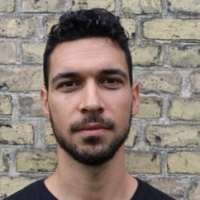
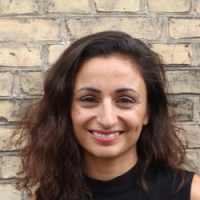
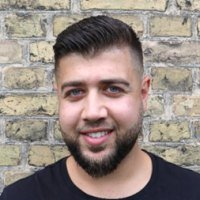
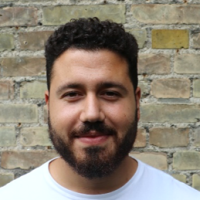
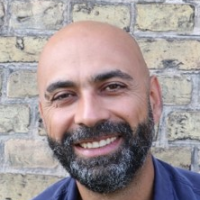
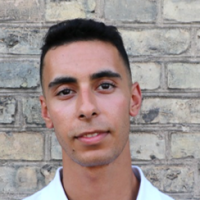
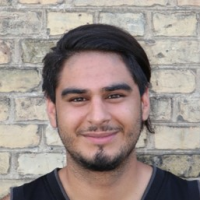
Artists as workshopleaders
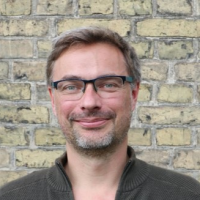
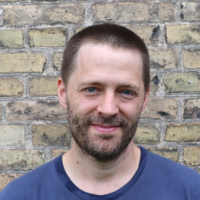
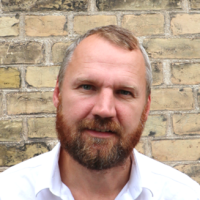
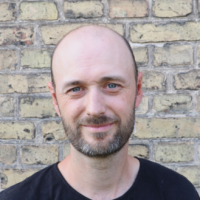
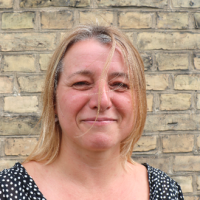
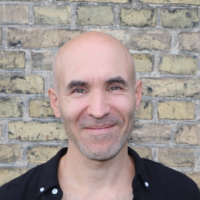
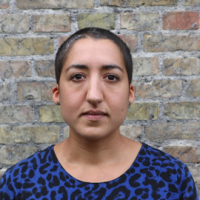
Scientists

Workshop by Inger Eilersen
It is interesting to see how people experience the world. This video illustrates and clarifies how people meet and experience the world in different ways. I am accustomed to a practice where the performers, through their dialogue with me, have one truth that they try to convey to an audience. In this video, the focus is on different ways of describing a piece of reality. Rather than having the audience fall victim to a particular perception which you as the sender thrust upon them, this video offers a space where the audience itself is able to construct different understandings of what they have experienced.
It was essential in this workshop that the participants were able to describe an experience of everyday life without much influence from my part, which is why the idea of a GoPro camera came up. Besides, it was important that they did not have to make all sorts of arrangements, but that it seemed to naturally fit into an already existing everyday life. I got annoyed with myself that I did not put myself into play alongside the four participants and wore a GoPro camera, so I chose to do that during the following workshop presentation.
In big films, everything is arranged in the head of the director or screenwriter, so the actor becomes some form of a puppet. When, in this video, we see the participants sitting at home with their birds singing around them, we feel some more or less clear-cut impacts, because we are not receiving an introduction in the form of a context. We are transported directly into an immediate present. It is an unfiltered and clean clip that demonstrates a moment in a person’s life. When people tell stories, they will often talk about something in their past, their relationships or self-understanding. This I do not experience very strongly in the clips in the video.
If you just watch the video that was shot by the participants over the two days, it is like watching something without glasses: That it is what it looks to be. After these raw clips were recorded, I got the four participants to comment on their own video, thus creating another layer of reality. In addition, I chose to let three experts with different professional backgrounds comment on the video. The three experts represent various perspectives by virtue of their different professional background. Naturally, this will colour the way they see the world. So, when the experts comment, it is as if several understandings and layers of reality meet.
I was thinking about doing an installation of this, where five different people would be listening to five different soundtracks, and then I would subsequently ask them to discuss what had happened, but I never got around to doing that. If you are interested, you can sit down and listen to all five soundtracks and see what happens.
Workshop by Charlotte Østergaard
Charlotte is a colleague with professional competence within textiles, costumes, fashion and design. She has been told to work within the overall framework of co-creation. She has been given a limited timeframe and has described how she would like to find someone for her workshop with migrant experience who can relate to arts and crafts. When Charlotte asks the participants to bring a lot of textiles, she does not know the subject of discussion in advance.
At the textile workshop, I notice that the four women do not directly talk about their migrant experiences. They talk about something to which they have close relations, and they themselves have chosen the subject of discussion. Often people who participate in documentary performances create a so-called resume narrative. This implies that the narrative is based on something superficial, and that they do not necessarily get into the essence of the subject.
Through the garments which the participants bring, they circle in on some impacts that reveal what is important to them. For example, attention to colours diverts the conversation from textiles to societal and religious discussions where the participants share cultural, personal and family narratives.
By means of the conversation about textiles, Charlotte thus opens up a safe space where together they can share and create something in an investigative space. Charlotte also manages to place herself in a participatory position among the other participants. For them, there is a freedom in not having to solve a task, but being allowed to get inspired and get associations in a safe and unbiased way. Through the interweaving of textiles, they take one step closer to an interweaving of narratives and cultures.
Workshop by Mikkel Flyvholm
This workshop emanated from a desire to create understanding and empathy by taking on someone else’s story, in this way trying to understand the reality from which the story originates. If you know that something is based on a true story, then you experience it in a special way. What you experience in the video is that Evrim’s story is first told by himself and then retold by the other two actors, where you are made to believe that it is their story. But how important is it that the person who ‘owns’ the story is also the one who narrates it? This has been the focal point which Mikkel has zoomed in on during this workshop.
In order to create a sense of security and trust, Mikkel chooses to let the participants talk about the previous day, from which you will always be able to remember something. They may choose something simple and thus take a small surface dive into each other and each other’s everyday life. The somewhat lighter narratives can lead to deeper narratives. There are no requirements from Mikkel’s side with respect to the stories that are shared. The choice will be entirely and utterly up to the participants.
The video shows how Mikkel and the actors start laughing together. The laughter may help open up a space for a deeper conversation. Mikkel has an appreciative, cautious and sensitive way of being in the space with the three participants, which is expressed through his language and behaviour. Exposing one’s vulnerability is always risky, but being vulnerable also expresses strength as the stories may reveal recognition. The vulnerability can thus be experienced as a strength that can move people closer to one another.
Evrim chooses to share a story about a hot dog stand, which is an everyday story where you do not initially understand the depth. It is as if he himself only discovers its profundity when he gets to the end of it. He is reflecting on why he was telling precisely that story, and how it brings up the loving words of Evrim’s mother.
The moment he arrives there, he hits a spot that the others can take example from as it becomes a personal narrative that goes beyond the private.
As they begin retelling each other’s stories, it seems effortless to take on another person’s remembrances, and they are also surprised that they experience empathy and understanding in doing so. The reason why this occurs may be that it is something that they themselves can relate to. In this way, it can create understanding both internally and externally.
If you do not know a story in advance, and you know you need to retell it, your attention will sharpen. You need to be fully concentrated on experiencing the other’s mimicry, language and details as you have to embed the story into yourself if you are to share it with people who do not know it. It is reminiscent of old storytelling, where stories passed from one person to the next. When you need to remember, you use the body. In the absence of precise words, the body will remember actions that can bring the words to life. The physical mirroring lies ahead of the emotional understanding. When you make the memories physical, you will be able to recall them linguistically. This is similar to acting, as Mikkel says in the video. Remembering others’ stories can be challenging if you do not dive into the text and gain an understanding of the sensory landscape. The understanding can produce weight and value as if experienced on your own body. Personal stories may be moving because they reproduce things from the vast hinterland: All the things that are not found in the text. If someone just says words without implicating the body, mind and emotions, it becomes irrelevant.
It is interesting to explore why it is more fascinating to hear a story that you experience as real rather than a fictional story. After all, the story you come up with will always come from something real. It may be that as human beings, we strive for a core of truth. I do not know if I am able to tell what a true story is. The moment you carve out a bite of reality as you do in documentary theatre, it will always be selected, framed and staged. Reality is created in the spheres between people when a person takes on a story and an audience experiences it as a piece of reality. Thus, something may be real without necessarily being true. As Moritz mentions in the subsequent reflection, this workshop can be considered as a space of opportunity, as we come closer to an understanding of each other’s understanding of the real, diving into each other’s stories. In this way, reality and truth are always negotiable.
Workshop by Andreas Liebmann
Andreas, who hosts this workshop, talks about ways in which you may demonstrate qualities in people that have been given the label refugee by the rest of us. The workshop centres around knowledge sharing, where Andreas asks a handful of participants to share their knowledge. If you meet someone who holds knowledge that you are curious to learn about, then as a dialogue partner you will reach out for that person’s knowledge which can be considered as something different from the personal narrative and may help us to relate to each other. Also, knowledge sharing has the potential for us as humans to reach into unknown fields together.
A person who does not experience being stigmatised in everyday life may tend to regard a refugee as a victim. If this person possesses some knowledge, it will help you to reshape your view of the person, as the person then becomes an expert within a field. So, to me, it appears as if this workshop is about power relations and negotiating them – in this example through knowledge sharing.
Talking to a group of people requires you to speak from a space where you feel confident. If you are uncertain whether you are welcome in a space, you may also become uncertain about your knowledge and the dissemination hereof. If you can find a space where you feel secure through an awareness that your knowledge is valid and valuable, then you will experience greater confidence in other spaces, which Andreas is trying to create at this workshop. The workshop focuses both on the importance of minority individuals having platforms where they can share experience and knowledge and on the importance that their position as part of a minority does not overshadow their knowledge. It is an embedded paradox that is important to call attention to.
Workshop by Yann Coppier
This workshop focuses on music as a universal language inasmuch as sound can reach a different area of the brain than language. The psyche thinks in pictures, which implies a plasticity and elasticity that in the translation into language may lose meaning and emotive nuances. Similarly, sound is able to hold on to what we contain, which speaks to different parts of the body. We may be moved by sound and experience pictures of landscapes or moods. We do not need a translation as music does not require specific translations. If a flute describes a yearning, it does not matter which part of the world you come from. You will be able to feel it.
Yann has been instructed to invite people with a migrant background to the workshop. To this end, as the framework for the workshop, Yann decides that the participants must create music together on the spot. Since Yann does not want the workshop to focus on the migrant label, he is inviting the participants by virtue of them being musicians. Thus, this study is also about how we can look past the labels of migration, immigration, them/us and so on. By inviting musicians, Yann places the participants in the same category as himself, as he is also a musician. It becomes another point of departure for meeting each other, which means that it is the music that creates a shortcut to a person. When Cahit shares his flute play, he opens up some stories as the stories live in the instruments.
During this workshop, Yann worked with a missing centre in relation to the sound. Instead, there was a lot of positions where you could experience the sound differently. The circular and explorative are part of Yann’s own artistic work. Because Yann has not created a centre, he makes the audience move around in the sound to experience it in different ways – according to the persons’ current position. Because the sound is circular, you move accordingly. Thus, as you move around in this space, you will be curious to understand the different positions in the space.
Yann is preoccupied with decentralising the music, which may be compared to Artistic Response as a method that strives to remove a central figure. This makes it more inclusive for people in minority positions. Thus, it is about power and who possesses the power. In that lies a dream or ambition to decentralise management, control and power in relation to what takes place in the community. I find that today, the power is far removed from the people. One might dream of the power returning to the people, which are some of the reflections that this workshop may spur.
